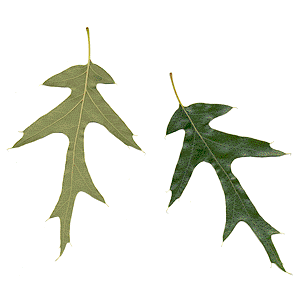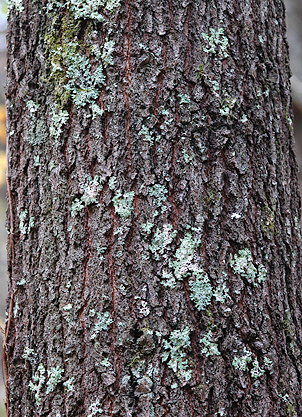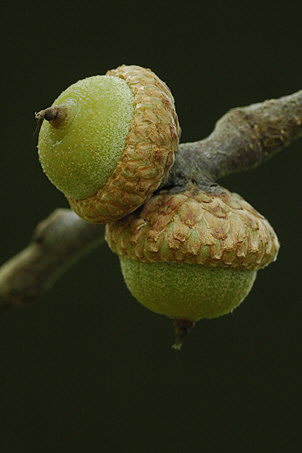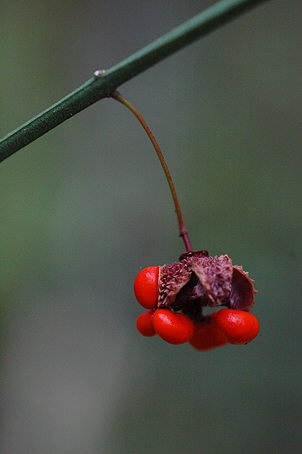| |
|
| |
 |
| |
Southern Red Oak Leaf |
Identification:
The fall color of Southern Red Oak leaves is reddish-brown.
The leaves are alternate,
simple, 5 inches to 9 inches in length,
and 3 to 7 lobed. Underside of leaf densely covered with
minute gray hairs. The sinuses are nearly to
mid-rib, and the lobes are bristle-tipped. Note the "U" -shaped base. As the leaves fall, note
the alternate branching on this tree.
| |
|
 |
|
|
Southern Red Oak Bark |
The bark of the Southern Red Oak is
dark brown to almost black, becoming deeply fissured on older trees.
The twigs of the Southern Red Oak
are orange-brown to dark red and smooth.
| |
|
| |
 |
| |
Southern Red Oak Acorns |
The acorns are 1/2 inch to 3/4 inch
long, with 1/3 of the nut enclosed by the thin flat cup.
The acorn scales are pale and densely hairy.
Other Uses
and Lore:
Also called the Spanish oak, the southern red oak is
actually unlike any oaks in Spain.
The
species name, falcata, comes from the Latin falcatus, meaning
scythe, and refers to the scythe-like form of the terminal blade of
the leaf. The course-grained, light red wood is used for general
construction, crates and furniture.
It graces the grounds of
Mount Vernon, and grows at
Yorktown and at
Appomattox.
The
acorn is higher in tannic acid than the acorn of the chinquapin oak
and for that reason it was not used for food by the Native
Americans. Wildlife tolerates the higher acid content, however, and
it is said to be excellent for wild turkey, squirrels, mice,
raccoons and deer.
The
Trail From Station Eleven to Station Twelve
 |
| Hearts-a-busting |
From Station
Eleven, the trail continues through woods that retain a little more
moisture than the dryer areas above. Look for fruiting
plants like the Hearts-a-busting shown at right. This is one
of the most colorful plants in the fall woods, and the contrast
between the purple capsule and the bright red berries is striking.
|

